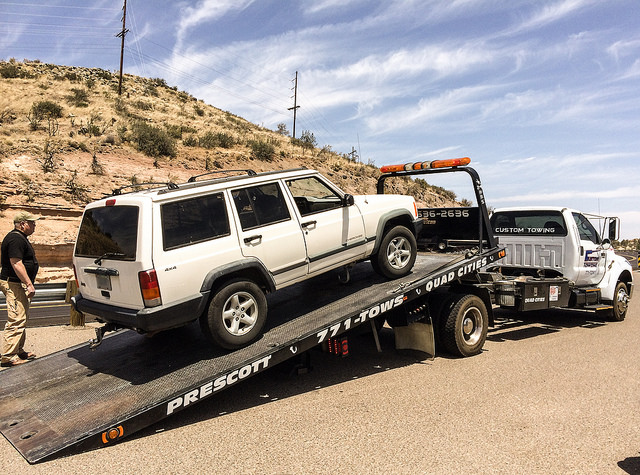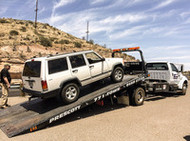What to Include in an Emergency Roadside Kit
30th Oct 2015

Did you know that the average car on U.S. roadways is now over ten years old? There's nothing wrong with trying to stretch a little more life of your vehicle before buying a new one, but older cars tend to have a more problems. As such, there's a greater risk of breaking down on the side of the road. Unless you want to be stranded for hours on end (hint: you don't), you should prepare an emergency roadside kit.
Jumper Cables
A dead battery is among the most common reasons why cars break down on the side of the road. Most car batteries are designed to last for roughly five years, at which point they begin to lose their ability to hold a charge. When this occurs, your car may abruptly stop in the middle of driving, or it may fail to start when you turn the ignition. Keeping a pair of jumper cables in a roadside kit will allow you to jump the battery if it goes dead.
Tire Patch Kit
Another all-too-common reason why cars break down on the side of the road is because of a flat tire. Assuming you have a spare on board, as well as a jack and tire iron, you can change it. If you don't have these items, however, -- of if two tires go flat -- you should have a patch repair kit. These kits usually consists of small pieces of rubber, glue/adhesive, and a metallic sandpaper-like tool.
Flares
Why do you need flares in an emergency roadside kit? Well, if you have to change a tire or perform other maintenance on your vehicle when it's broken down on the side of the road, you want to make yourself visible to other motorists so they don't accidentally hit you. Placing a flare nearby is one option that's sure to increase your visibility, which is why it's a good idea to include them in your emergency roadside kit.
Related Reading: How to Prepare Your Car for Winter Weather
Flashlight and Spare Batteries
When the sun goes down, it can be difficult to perform any maintenance on your brown down vehicle. Thankfully, carrying a flashlight in your emergency roadside kit will eliminate this problem by allowing you to work in the dark. Just remember to stash a couple extra batteries with it just in case the original batteries go dead.
Other items to include in your emergency roadside kit:
- Thermal blanket
- Philip's head screwdriver
- Flat head screwdriver
- Socket wrench set
- Pliers
- Duct tape
- Oil
- Gloves
- Paper towels
- Cash
If creating your own emergency roadside kit sounds too difficult, you can always buy one of the pre-made kits here at JBToolSales.
Photo credit: Dagny Gromer

